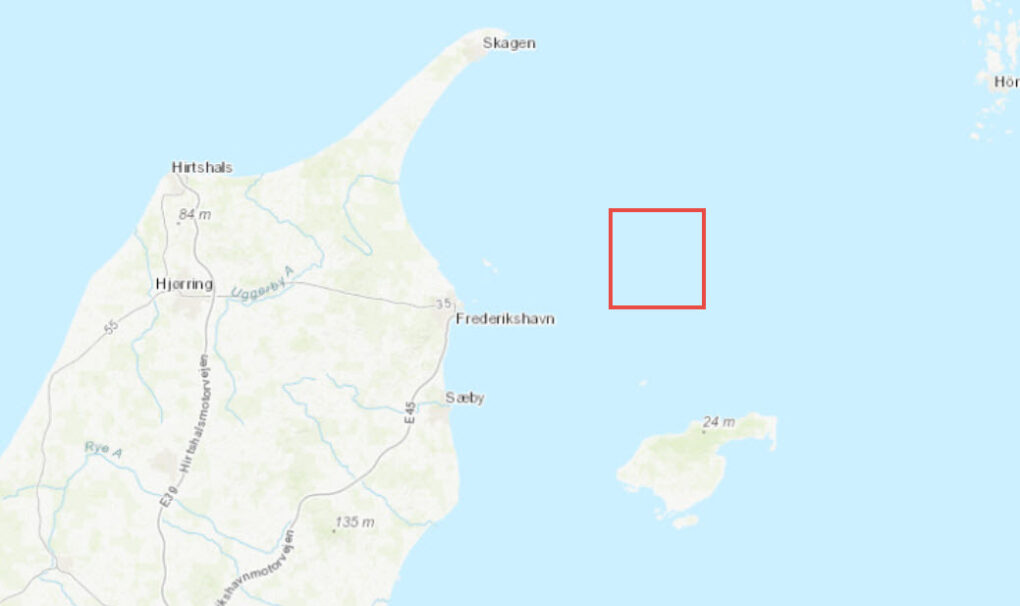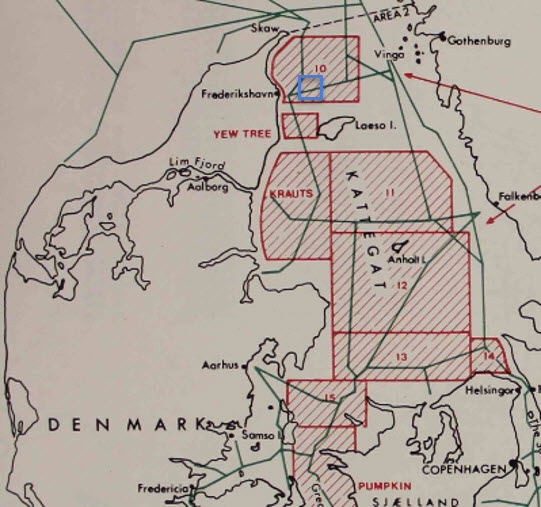Offering tailor-made solutions in the explosives business is one thing when operating within your country of residence. It’s a different matter, however, when you’re asked to conduct Historical Quick Scan studies on locations abroad, with countries as diverse as Egypt, Denmark, Georgia, and Morocco. Besides obvious aspects complicating your research, such as a possible language barrier or a small window of time to execute the study, the biggest challenge for the military historian remains having access to historical sources. In addition, the military historian would like to have a substantial amount of them too. Preferably in a database. Fortunately, REASeuro has just that.
Years of experience working with on- and offshore projects on unexploded ordnance has ensured the development of an expansive database of historical sources with which to work with. Having access to such a maintained database is crucial when conducting HQS-UXO abroad.

Take the Kattegat, for example. A sea area situated between Denmark and Sweden, these waters have historically been known as difficult and even dangerous to navigate because of the many sandy and stony reefs and tricky currents, which often shift. Regardless, heavy international traffic prevails in this small area, as it provides the Baltic Sea an outlet towards the North Sea. The strategic importance of this area ensures that during wartime, warring parties have a particular interest in controlling these straits. During the World Wars naval clashes took place in the Kattegat in addition to minelaying operations and submarine warfare.

The Kattegat is quite a substantial area to investigate, even when narrowed down to a certain area (see Figure 2). Still, REASeuro can make quite accurate estimates as to where military operations occurred and how they were conducted. In this case, we delved into our database to find out information on the warring parties’ naval intelligence used during the Second World War. By consulting correspondence and papers of the British Admiralty and Ministry of Defence, Navy Department, REASeuro was able to find out that the British Navy conducted minelaying operations based on the modus operandi of the German Kriegsmarine. By mapping the German naval routes in the Kattegat, the British developed the aptly named policy of ‘’gardening’’ the Kattegat with naval mines to disrupt German shipping (see Figure 3).: ‘Operation Blackcock’.

Of course, a military historian would not be pleased relying solely on using one single source to conduct his/her analysis and needs more evidence to construct an account of what happened in the Kattegat area during the war. Therefore, REASeuro also consulted the British Air Ministry: Bomber Headquarters to find out which group of aircraft were operating in the area, at which time and what kind of bombs they were carrying when conducting minelaying operations (see Figure 4). Sometimes, source material in the database can even tell us about which ships were sunk because of these minelaying operations (see Figure 5).


By consulting these kinds of sources REASeuro can pinpoint more accurately where UXO or other remnants of war might be encountered in any given area at any given place. Of course, there are many other sources we consult to construct a narrative, for these are but examples shedding some light on how REASeuro can operate even far away from its native area, investigating UXO on land, sea, and air.
REASeuro can use its database in constructing an accurate account of day-to-day operations in military history and accurately pinpoint locations of UXO. In addition, this database houses not only source material on the Second World War, but also on other military conflicts which occurred both before and after the Second World War. Backed up by academically trained historians with expertise in languages, explosives and/or military strategy, REASeuro stands at the forefront of development in the explosives business to make the world a safer place from UXO, one bomb at a time.
